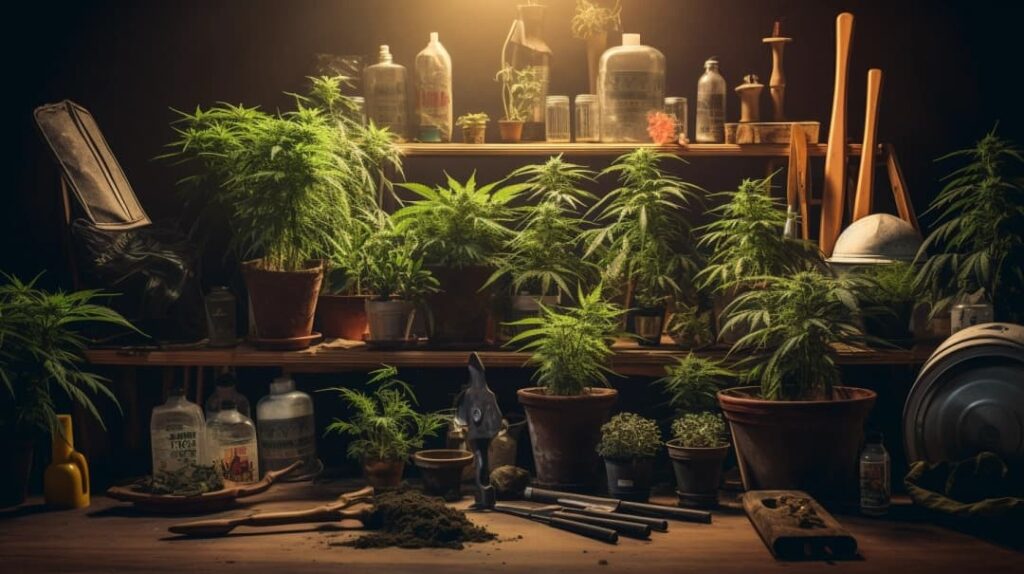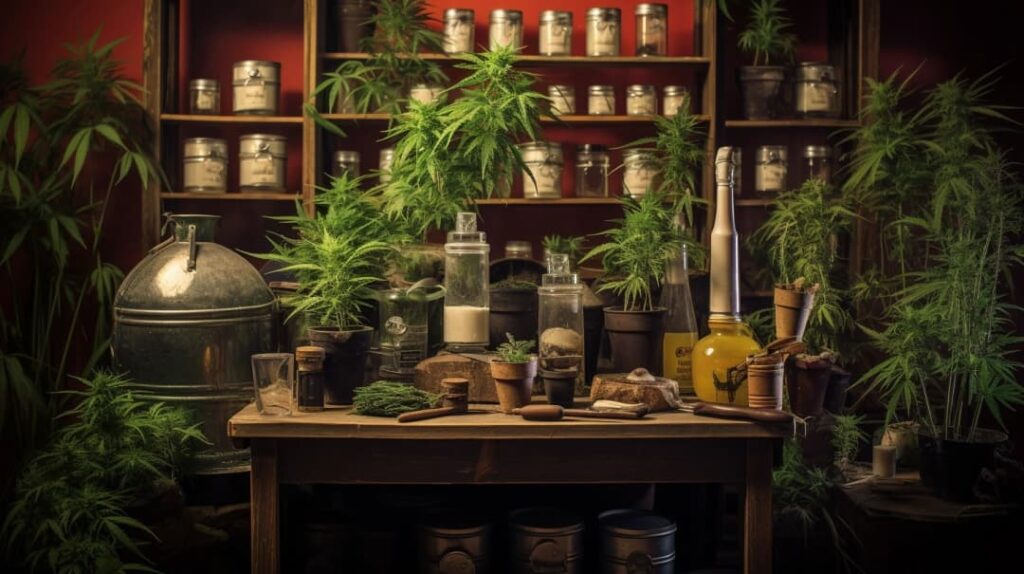Embark on a journey to master cannabis cultivation with our Denver dispensary guide. Navigate the world of recreational marijuana at legal dispensaries. Explore where to find quality cannabis products, from premium cannabis flower to diverse offerings, shaping your ultimate Denver dispensary experience. Dive into the nuances of selecting the right dispensary to curate an unparalleled cannabis journey.
Uncover the key factors that distinguish a top-notch Denver dispensary, ensuring access to the finest and most diverse cannabis options. Whether you’re a seasoned enthusiast or a curious novice, this guide equips you with insights to elevate your cannabis experience in Denver. From the latest strains to expert cultivation tips, this guide is your gateway to a thriving cannabis culture in the heart of Denver. It’s time to navigate the landscape of legal dispensaries and cultivate an enriched cannabis experience tailored to your preferences.
Choosing the Right Cannabis Strains
When choosing the right cannabis strains, consider your desired effects and preferences. Strain selection plays a crucial role in determining the kind of experience you will have. Each strain has its own unique combination of cannabinoids and terpenes, which contribute to the effects and benefits it offers. Indica strains, for example, are known for their relaxing and sedating effects, making them ideal for relaxation and sleep.
On the other hand, sativa strains tend to be more uplifting and energizing, making them great for daytime use and creative activities. Hybrid strains offer a combination of both indica and sativa effects, providing a balanced experience. Additionally, consider the specific benefits you are looking for, such as pain relief, stress reduction, or mood enhancement. Understanding the different effects and benefits of cannabis strains will help you make an informed choice that aligns with your needs and preferences.

Understanding the Basics of Cannabis Cultivation
To master cannabis cultivation, you need a solid understanding of the basic principles and techniques involved. One crucial aspect is soil preparation. Cannabis plants thrive in well-drained soil that is rich in organic matter. Before planting, it’s important to ensure that the soil is properly aerated and has the right pH level. Adding compost or other organic materials can improve soil fertility and structure. Another key factor in successful cultivation is nutrient management. Cannabis plants require a balanced supply of nutrients, including nitrogen, phosphorus, and potassium. It’s essential to monitor nutrient levels and adjust accordingly to prevent deficiencies or excesses. Using organic fertilizers or specialized nutrient solutions can help provide the right nutrition for your plants. By mastering these basics of soil preparation and nutrient management, you can lay the foundation for successful cannabis cultivation.
Creating the Ideal Growing Environment
Now let’s talk about the key points for creating the ideal growing environment for your cannabis cultivation. First, you need to understand the lighting requirements for your plants to thrive. Secondly, maintaining the right temperature and humidity levels is crucial for their healthy growth. So, let’s explore these essential aspects to help you create the perfect environment for your cannabis plants.
Lighting Requirements for Cultivation
To create the ideal growing environment for cannabis cultivation, you will need the right lighting requirements. When it comes to lighting options, two popular choices are LED and HPS lighting. LED lights are energy-efficient, produce less heat, and have a longer lifespan compared to HPS lights. On the other hand, HPS lights are known for their high-intensity output and are often used in larger-scale operations.
Another crucial factor to consider is the importance of light spectrum. Different stages of cannabis growth require different light spectrums, such as blue light for vegetative growth and red light for flowering. Providing the correct light spectrum ensures optimal plant growth and higher yields. So, when setting up your cannabis cultivation space, whether for indoor or outdoor cultivation, make sure to choose the right lighting option and provide the appropriate light spectrum for each stage of growth.
Temperature and Humidity Control
When managing the ideal growing environment for cannabis cultivation, it is crucial to control temperature and humidity levels. Temperature and humidity management are key factors in optimizing plant growth and ensuring healthy and potent cannabis yields. Maintaining the right temperature range, usually between 70 and 85 degrees Fahrenheit, allows the plants to thrive without being stressed or damaged.
Humidity levels, on the other hand, should be carefully monitored and adjusted to prevent issues like mold, mildew, or pests. The ideal humidity range during the vegetative stage is around 50-70%, while during the flowering stage, it should be reduced to 40-50%. Investing in proper ventilation systems, air conditioning, and dehumidifiers can help maintain the optimal conditions for cannabis cultivation, promoting vigorous growth and high-quality yields.
Nurturing Cannabis Plants From Seed to Harvest
Nurturing your cannabis plants from seed to harvest involves carefully tending to their growth and development. To ensure a successful cultivation process, here are some key points to consider:
- Nutrient deficiencies in cannabis plants: Understand the specific nutrient requirements of your plants and monitor them regularly to prevent deficiencies that can stunt growth and reduce yield.
- Techniques for maximizing yield in cannabis cultivation: Implement training methods like topping, super cropping, and low-stress training to encourage lateral growth and increase bud production.
- Proper watering and irrigation: Maintain a consistent watering schedule, allowing the soil to dry slightly between waterings to avoid overwatering or root rot.
- Light and temperature control: Provide your plants with appropriate light levels and maintain a consistent temperature range to optimize growth and flowering.
- Pest and disease prevention: Regularly inspect your plants for pests and diseases and take preventative measures to ensure a healthy crop.

Managing Pests and Diseases in Cannabis Cultivation
As you continue the cultivation process, it is essential to effectively manage pests and diseases that can harm your cannabis plants. Integrated pest management (IPM) is a holistic approach that combines prevention, monitoring, and intervention strategies to minimize the use of harmful chemicals. By implementing IPM, you can keep pests and diseases under control while protecting the environment and your plants’ health.
One of the key components of IPM is the use of natural remedies. These remedies include beneficial insects, such as ladybugs and predatory mites, which can help to control pest populations. Additionally, neem oil, garlic spray, and other organic solutions can be used to deter pests and treat diseases. By taking a proactive approach and using natural remedies, you can effectively manage pests and diseases in your cannabis cultivation process.
Harvesting and Curing Cannabis for Optimal Quality
To ensure optimal quality, continue the cultivation process by properly harvesting and curing your cannabis plants. Here are some essential techniques and methods to consider:
- Drying Techniques: Hang your harvested plants upside down in a dark, well-ventilated area with a temperature of around 60-70°F for approximately 7-10 days.
- Trimming Techniques: Trim off any excess leaves and stems, focusing on preserving the buds for a smoother smoking experience.
- Storage Methods: Store your cured cannabis in airtight glass jars to maintain freshness and prevent degradation caused by exposure to light and air.
- Preservation Methods: Consider using humidity packs or moisture control packs to regulate the moisture levels in your stored cannabis, ensuring long-term potency and flavor.
- Patience: Remember, curing is a slow process that requires patience. Allow your cannabis to cure for at least 2-4 weeks to achieve the best flavor and potency.
Final Thoughts
Mastering cannabis cultivation requires a thorough understanding of choosing the right strains, creating an ideal growing environment, nurturing plants from seed to harvest, and managing pests and diseases. Additionally, proper harvesting and curing techniques are essential for optimal quality. By following these steps, you can ensure a successful and rewarding cannabis cultivation experience.


